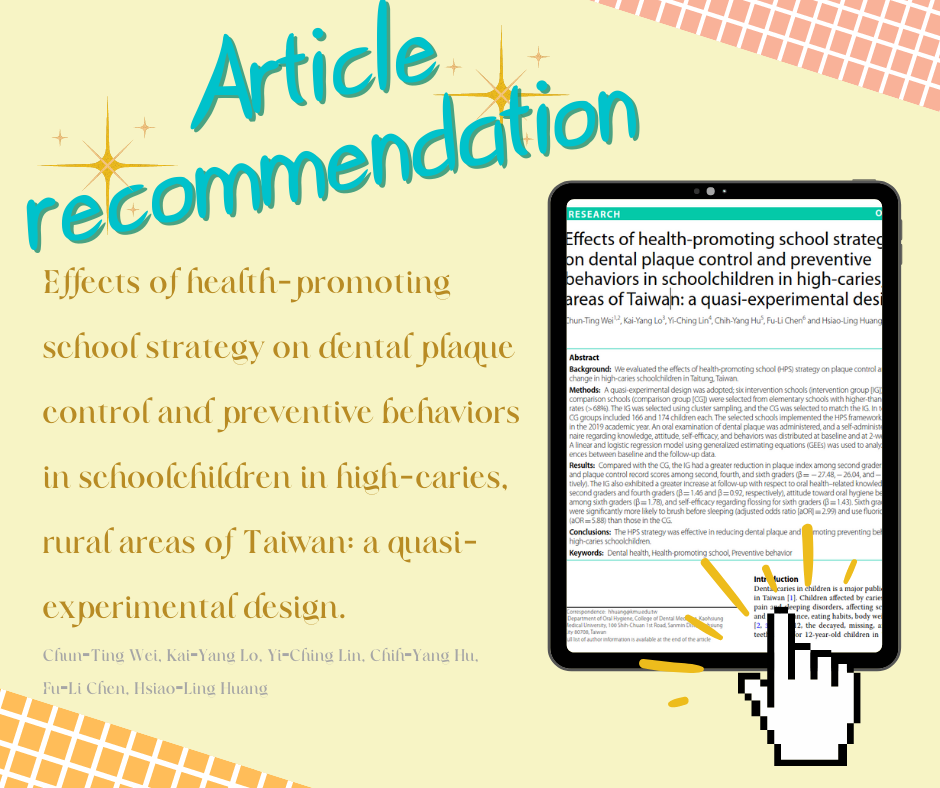Effects of health-promoting school strategy on dental plaque control and preventive behaviors in schoolchildren in high-caries, rural areas of Taiwan: a quasi-experimental design
Chun-Ting Wei, Kai-Yang Lo, Yi-Ching Lin, Chih-Yang Hu, Fu-Li Chen, Hsiao-Ling Huang
Background
We evaluated the effects of health-promoting school (HPS) strategy on plaque control and behavior change in high-caries schoolchildren in Taitung, Taiwan.
Methods
A quasi-experimental design was adopted; six intervention schools (intervention group [IG]) and six comparison schools (comparison group [CG]) were selected from elementary schools with higher-than-average caries rates (> 68%). The IG was selected using cluster sampling, and the CG was selected to match the IG. In total, the IG and CG groups included 166 and 174 children each. The selected schools implemented the HPS framework for 3 months in the 2019 academic year. An oral examination of dental plaque was administered, and a self-administered questionnaire regarding knowledge, attitude, self-efficacy, and behaviors was distributed at baseline and at 2-week follow-up. A linear and logistic regression model using generalized estimating equations (GEEs) was used to analyze the differences between baseline and the follow-up data.
Results
Compared with the CG, the IG had a greater reduction in plaque index among second graders (β = − 0.36) and plaque control record scores among second, fourth, and sixth graders (β = − 27.48, − 26.04, and − 18.38, respectively). The IG also exhibited a greater increase at follow-up with respect to oral health–related knowledge among second graders and fourth graders (β = 1.46 and β = 0.92, respectively), attitude toward oral hygiene behaviors among sixth graders (β = 1.78), and self-efficacy regarding flossing for sixth graders (β = 1.43). Sixth graders in the IG were significantly more likely to brush before sleeping (adjusted odds ratio [aOR] = 2.99) and use fluoride toothpaste (aOR = 5.88) than those in the CG.
Conclusions
The HPS strategy was effective in reducing dental plaque and promoting preventing behaviors in rural high-caries schoolchildren.
Reference from:https://bmcoralhealth.biomedcentral.com/articles/10.1186/s12903-021-01927-z



